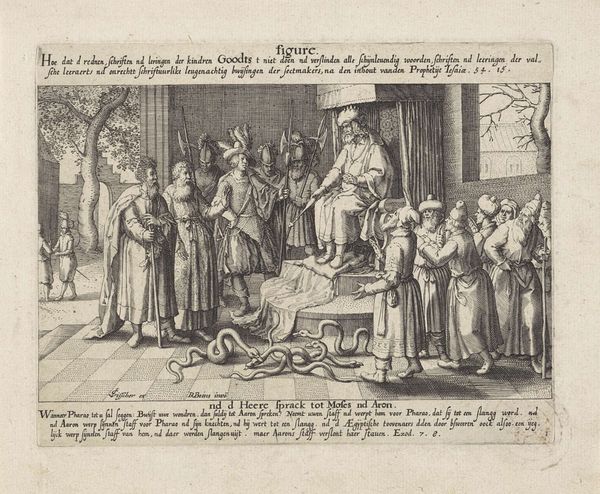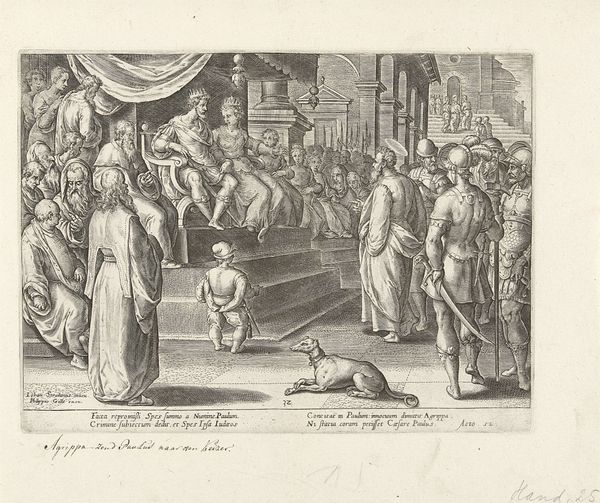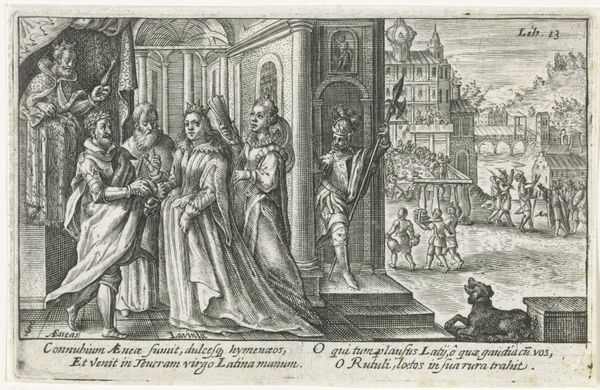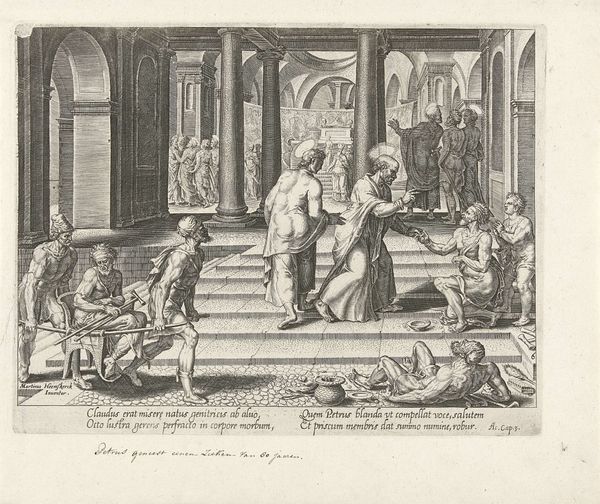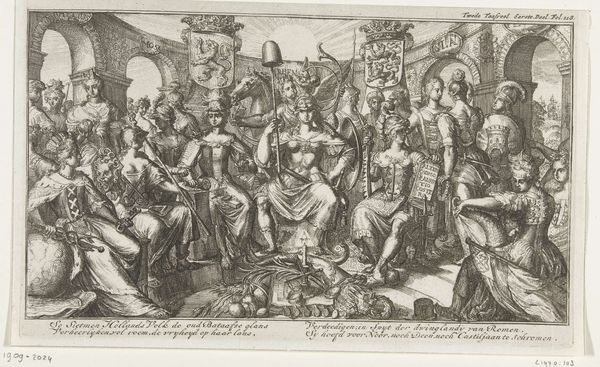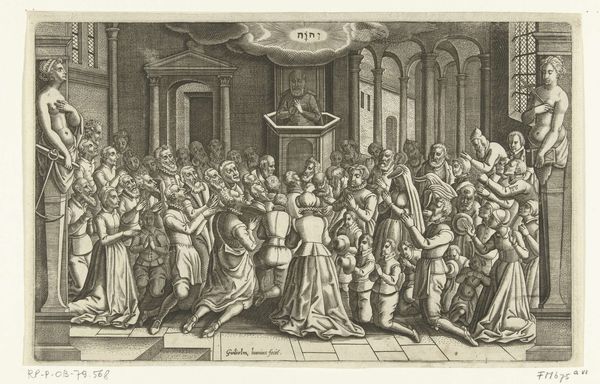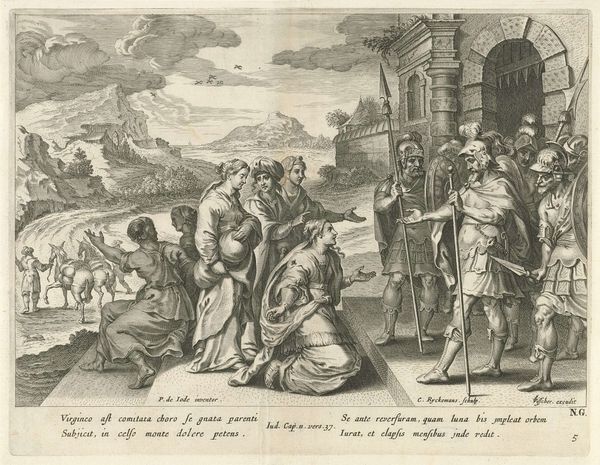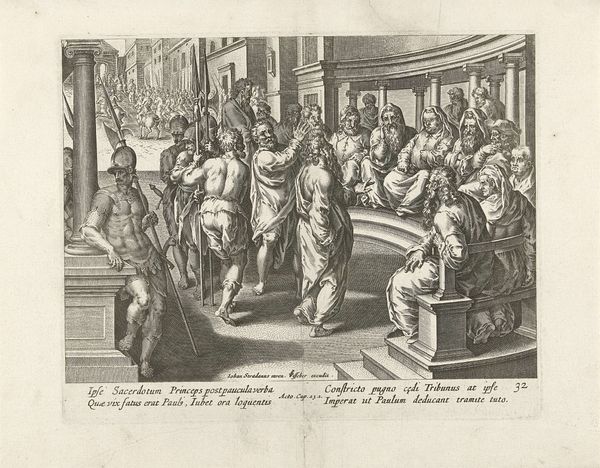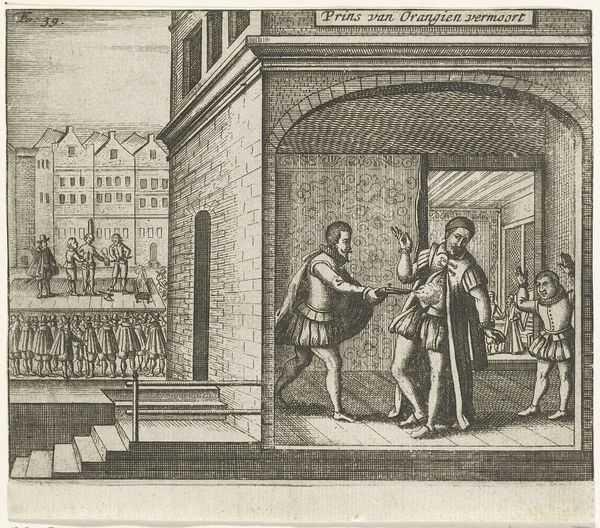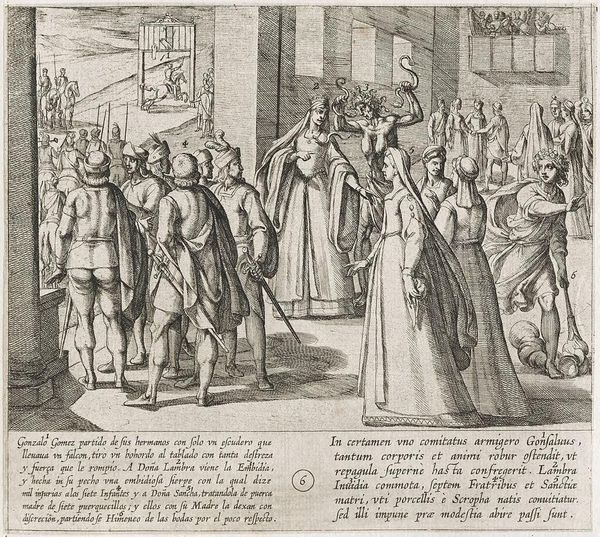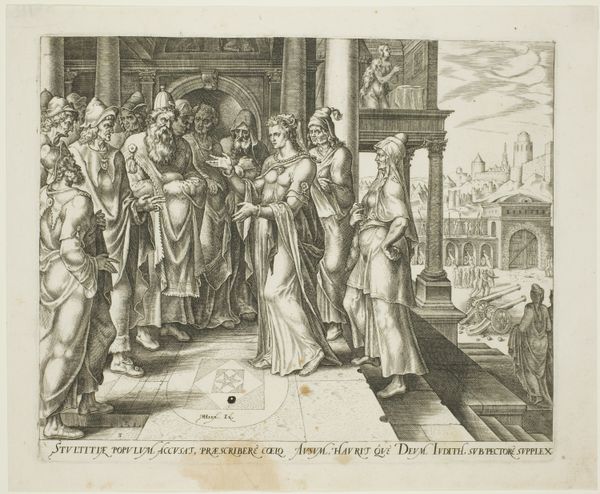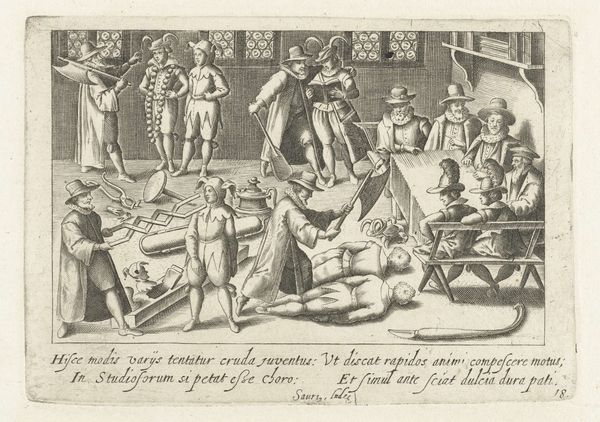
print, engraving
# print
#
classical-realism
#
figuration
#
11_renaissance
#
line
#
history-painting
#
northern-renaissance
#
engraving
Dimensions: height 219 mm, width 269 mm
Copyright: Rijks Museum: Open Domain
Curator: Philips Galle's "The Laying of St. Stephen" from 1582—what leaps out at you, looking at it? Editor: It's interesting! It has a very classical feel in its composition. The scale is larger than I thought. And… it's a print? I immediately think of Renaissance ideals of martyrdom. How do you interpret this work? Curator: Ah, "Renaissance ideals"...a curious phrase. I am drawn to the somewhat understated drama. See how the rigid architectural background kind of throws into relief the intimate act of mourning and burial? It’s a print, yes, which would’ve allowed the image to circulate widely. Does the presence of classical architecture shift your interpretation about it? Editor: It does, actually. I didn't notice the backdrop as much, I was so focused on the figures. Now it gives it a sense of timelessness, like it could be happening in any era. And perhaps speaks to Galle positioning St. Stephen within that classical framework, as part of that continuum? Curator: Precisely! Or rather, possibly. I find it’s much more useful to think of artworks of history as prompts, really – to imagine all the possible interpretations as a spectrum of responses rather than fixed "answers." What new prompt do *you* imagine seeing here? Editor: Thinking about circulation… Makes you wonder how an image of persecution might inspire both devotion and perhaps, dissent? It’s not static, it ripples through time, changing with each new pair of eyes. Curator: I like how you frame it – not just as an object to be passively observed, but one actively shaping meaning, then and now. What have *we* made of it?
Comments
No comments
Be the first to comment and join the conversation on the ultimate creative platform.

